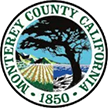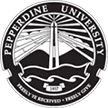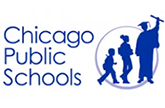As entertainment, education, and information dissemination rely more on visual mediums, the need to interpret those visuals increases. Audio description services, also called video descriptions, described video, or visual description, bridge that gap, allowing everyone to engage with and understand visual mediums. Audio description allows the visually impaired to experience video content by not only listening to any audio content but also listening to descriptions of what is being shown, thus closing the gap from what is experienced by those who can see the screen.
Audio description services, such as those offered by Cal Interpreting & Translations, play a pivotal role in making visual content accessible to individuals with visual impairments. These services provide verbal descriptions of visual aspects, including body language, facial expressions, and other significant visual elements integral for the visually impaired to understand the visual context of what they hear in a video. This can include preparing scripts, recording voice overs, and editing videos. We can also provide translations if multiple languages are needed.
Extended audio description is crafted to create a more comprehensive understanding of the video content for visually impaired audiences. This form of description considers the complexity of visual elements, particularly in fast-paced sequences or content laden with rich visual data, by inserting pauses into the original video track. These pauses allow voice talent to deliver high-quality video descriptions of the visual content without missing any critical information. This often includes detailed descriptions of actions, settings, costumes, and other significant visual information that may not be obvious without visual aids. Extended descriptions are invaluable in various applications, from entertainment, ensuring an inclusive experience for all viewers, to educational contexts, where they clarify complex visual aids such as graphs and charts. In the meticulous placement of pauses and the creation of the additional audio track, the descriptive narration does not interrupt or overshadow the existing audio, thereby providing a seamless, enriched, and engaging cultural experience. Due to the nature of extended audio descriptions, the resulting video’s runtime is longer than the original version without descriptions.
Inline audio description, otherwise known as standard audio description, involves the integration of visual descriptions into the natural pauses of a video's original audio track. By fitting verbal descriptions of visual content within these pauses, the video's original runtime remains unchanged, creating an unobtrusive and continuous entertainment experience. The voice artists offering inline audio descriptions must possess exceptional descriptive skills and the ability to convey the subtleties of visual elements succinctly, often within mere seconds. This service enhances the entertainment value for people with visual disabilities, enabling them to visualize the narrative through verbal cues while simultaneously enjoying the original audio content. This description mode promotes a more inclusive experience for a broader audience, ensuring that cultural experiences are shared universally regardless of visual capability. Due to time constraints, inline descriptions might not be able to fit as much content as an extended audio description.
Creating an inclusive entertainment experience for individuals with visual impairments requires the meticulous craft of audio description. This service involves a specialized workflow to ensure that the essence of visual media is translated accurately into an auditory format. The essential stages in this workflow include the creation of a script, the recording of voiceovers, and rigorous editing to refine the final product.
Script creators immerse themselves in the original content, analyzing every detail, from body language and facial expressions to the contextual significance of the visual aspects. This deep dive into content enables them to identify visual information that enhances the viewer's understanding and enjoyment.
Crafting a described video script demands both art and skill. It involves selecting the most pertinent visual details to convey and embedding them into the video content's natural pauses, thus maintaining the original pacing and rhythm. Describers face the challenge of creating a clear, concise, and culturally appropriate script while being delivered at a pace that is easy for the listener to follow.
With a polished script in hand, the next stage is recording the voiceover. This task falls to professional voice artists, who must deliver the descriptive narration with a nuance that enhances rather than distracts from the original audio track. Their performance must be balanced. It needs to be distinct enough to be understood yet subtle enough not to overpower the primary dialogue and sound elements.
During post-production, a mixing specialist meticulously adjusts the audio levels, ensuring that the descriptive video service does not eclipse the integral sounds of the video content. Editors also play their part, optimizing the descriptive narration to avoid overlaps with essential dialogue and music.
One of the most significant advantages of advanced audio description services is the ease and efficiency of editing. Modern technology enables quick changes to the audio file, such as grammatical corrections or updates to terminology, without a costly and time-consuming rerecording process.
This ability to edit and immediately propagate changes across all versions of the audio track simplifies the audio description process. It allows content creators to make post-production adjustments with ease, ensuring that the descriptive narration remains up-to-date and relevant.
Cal Interpreting & Translations understands that audio description services must be flexible and adaptable to various platforms and formats to ensure a truly inclusive experience. These services can profoundly enhance accessibility across multiple media formats, including TV shows, films, educational videos, live events, websites, museums, and mobile applications. This breadth of access foregrounds the importance of universal design.
Content providers have multiple options when integrating audio description tracks. They can publish an additional video asset with descriptions incorporated into the primary audio track, or they can utilize a secondary audio track that harmoniously pairs with the original audio, enriching it with descriptive elements at natural pauses. This dual methodology means audiences can receive the same cultural and entertainment experiences without losing contextual integrity.
In cinema and television, video description services help individuals who are blind or visually impaired access visual elements and enjoy the content alongside sighted audiences. Their implementation spans theaters, cinemas, guided tours, television broadcasts, and streaming platforms, reflecting the burgeoning demand for media accessibility.
Educational audio description services prove invaluable by enabling visually impaired students to engage with visual materials to facilitate an equivalent learning experience. These narrated descriptions aid in presenting visual information in an educational context, from classroom instructional videos to live demonstrations, cultivating an inclusive academic atmosphere.
Extended audio description, which introduces additional natural pauses for more descriptive detail, is particularly beneficial for classroom settings. It offers comprehensive depictions of complex visual information, ensuring all students can access and understand the presented materials.
Museum experiences are enriched for visually impaired visitors through the infusion of visual description services, which render the visual elements of exhibits accessible and engaging. By integrating audio descriptions, museums and cultural institutions can extend their reach, embracing a broader and more varied audience.
These services enable those with visual disabilities to partake more fully in the exhibit experience. As museums incorporate audio descriptions into their display narratives, they contribute to their educational outreach efforts and create a truly inclusive experience.
Cal Interpreting & Translations is a leading language service provider that promotes inclusivity and handles all types of visual description and translation services. Contact us if you need assistance with your visual description needs.


No matter what your needs may be, we can and are ready to assist you now. We have translators and interpreters standing by 24/7.

CIT's interpreter is such a rockstar, and it’s so great to have him as a lead interpreter for our Board meetings. About Our Interpreters 
Thank you for always being able to handle emergency interpreting assignments with ease. About Urgent Requests 
Thank you for always being able to handle emergency interpreting assignments with ease. About Urgent Requests 
Your translation rates are more competitive than other language service providers I used in the past. About Pricing 

Professionalism matters at CIT. We respond to request inside 24 hours.







